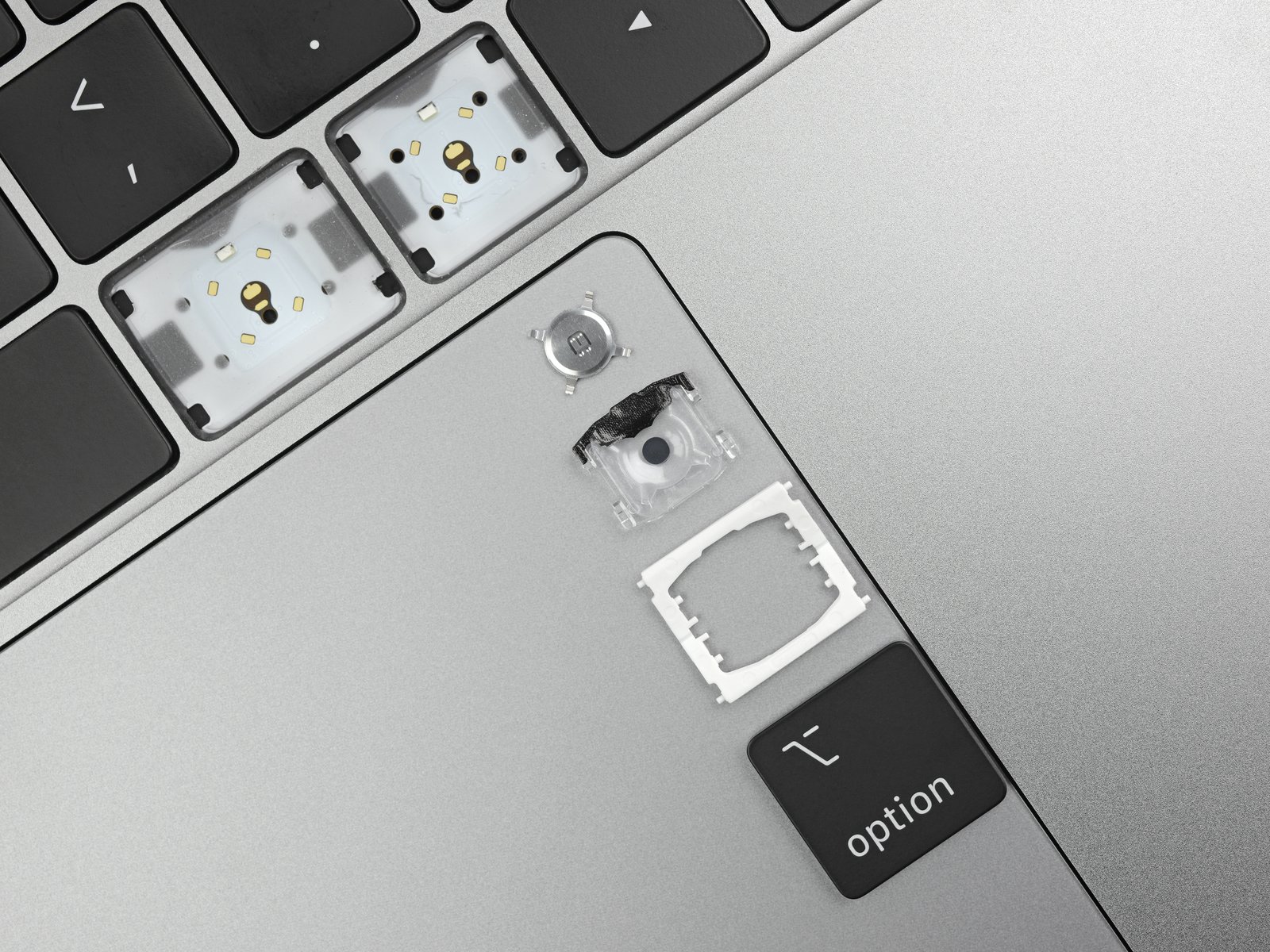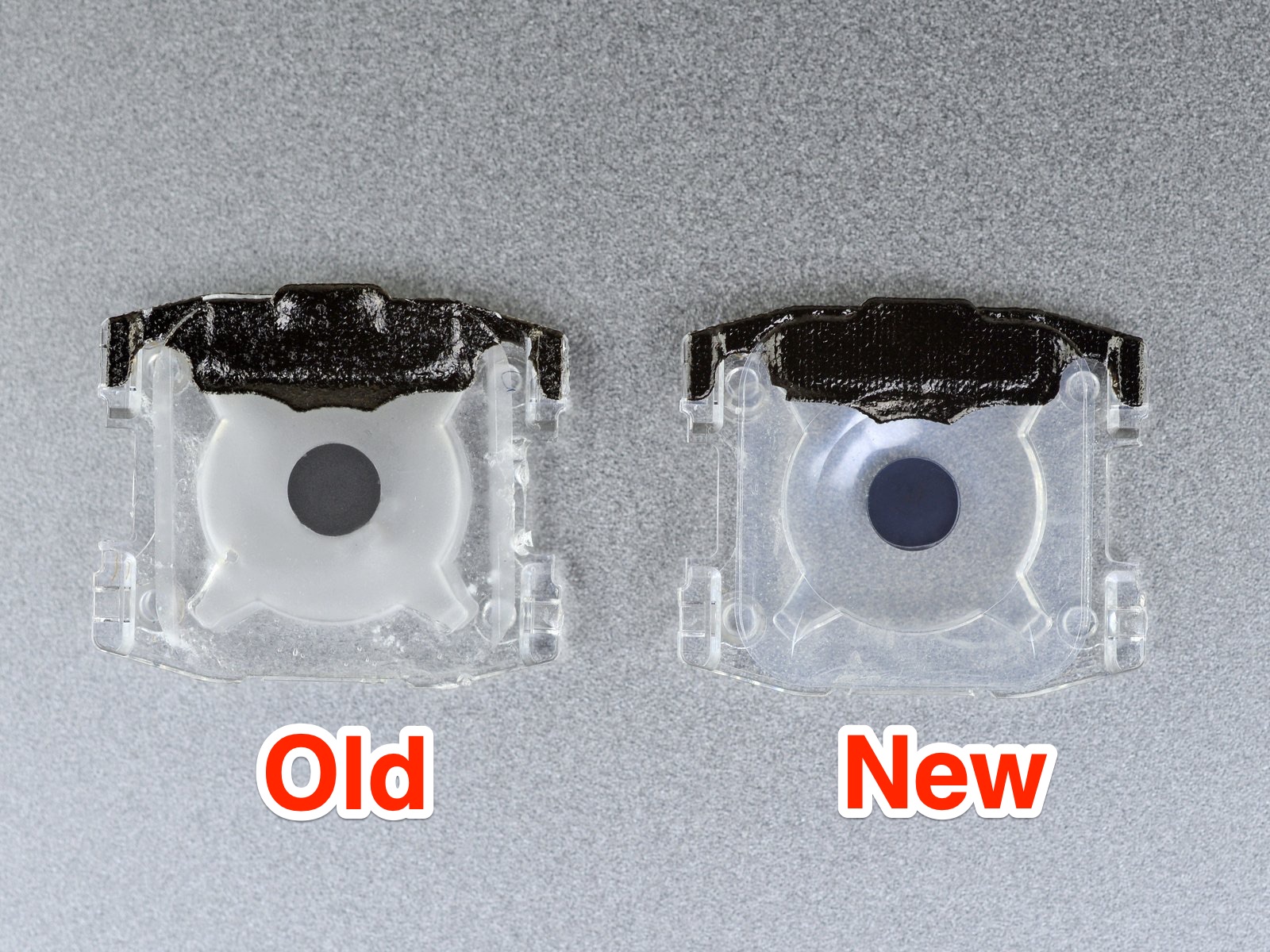
This year’s Mac keyboards were immediately added to Apple’s newly expanded keyboard repair program following the speedy 8-core MacBook Pro models that dropped Tuesday.
The word “keyboard” is not even mentioned in Apple’s press release announcing the refreshed machines, leaving us wondering if these new Pros have finally fxd our kyboad problms.
From the iFixit analysis:
Has Apple finally fixed the MacBook Pro’s troubled keyboard? To find out, we pulled one apart and took it to our local materials engineering lab for some analysis. We found a new blend of plastic protecting the key switches and the springy metal domes in the switches have also been subtly tweaked in a way that may stop thosse peskkyy doubble inputts and missd ky prsses.
This year’s butterfly switch revision keeps the silicone membrane but tweaks the materials in the springy metal dome and the plasticky material that covers it.

2016’s butterfly keyboard (left), 2018’s updated design with a silicone membrane protecting the key switches (middle) and 2019’s revision with tweaked materials in the springy metal dome and the plasticky material that covers it (right).
With last year’s MacBook Pros, Apple made an attempt to contain the typing issues some people were experiencing with the problematic butterfly keyboard mechanism by putting a silicone membrane under the keycaps, which in addition to quieter typing was supposed to prevent specks of dust and debris from entering the butterfly mechanism, only it didn’t.
The new plastic material is crinkly and transparent, as per lab tests conducted by Cal Poly.
When comparing these FTIR spectra to that of known polymers, the closest match for the 2018 model is polyacetylene with aromatic urethane side groups, while the 2019 model uses polyamide (commonly known as nylon). What this doesn’t tell us is, just what problem Apple’s engineers tried to solve using this updated material.
iFixit speculates the updated metal dome could be a new surface treatment or a tweaked alloy. Whether this will help address the bounce-back or other issues remains to be seen.

The difference in surface finish of the metal dome switches from the 2018 version, at left, vs. the 2019 version, at right.
iFixit listed the key components of 2019’s butterfly switch:
- Topping it all off is the key cap. This has a handy label to tell users which key is broken.
The hinged white bracket is the “butterfly” mechanism controlling the key’s motion—stabilizing it so as to travel up and down without tilting or wobbling. - Nesting within that bracket is a transparent cover that flexes with each key press, while keeping contaminants away from the dome switch underneath. The black dot at its center concentrates the force of your key press onto the switch.
- The main character of this assembly is the springy metal dome switch. It deforms when the key is pressed, bridging the board’s six contacts—and then bounces back when you release the key.
- Underneath the dome switch are six metal pads. A keystroke registers whenever the top center pad is shorted to any of the other five pads.
- To wrap it up, the silicone membrane covers the butterfly mechanism to keep debris from getting in and jamming it.
Confused? All you need to know about the butterfly switch mechanism in these new MacBook Pros is that the transparent switch cover material is now clearer and smoother to the touch and that the magnetized dome switches now have a different surface finish.
Share your thoughts on the new Pros in the comments down below.